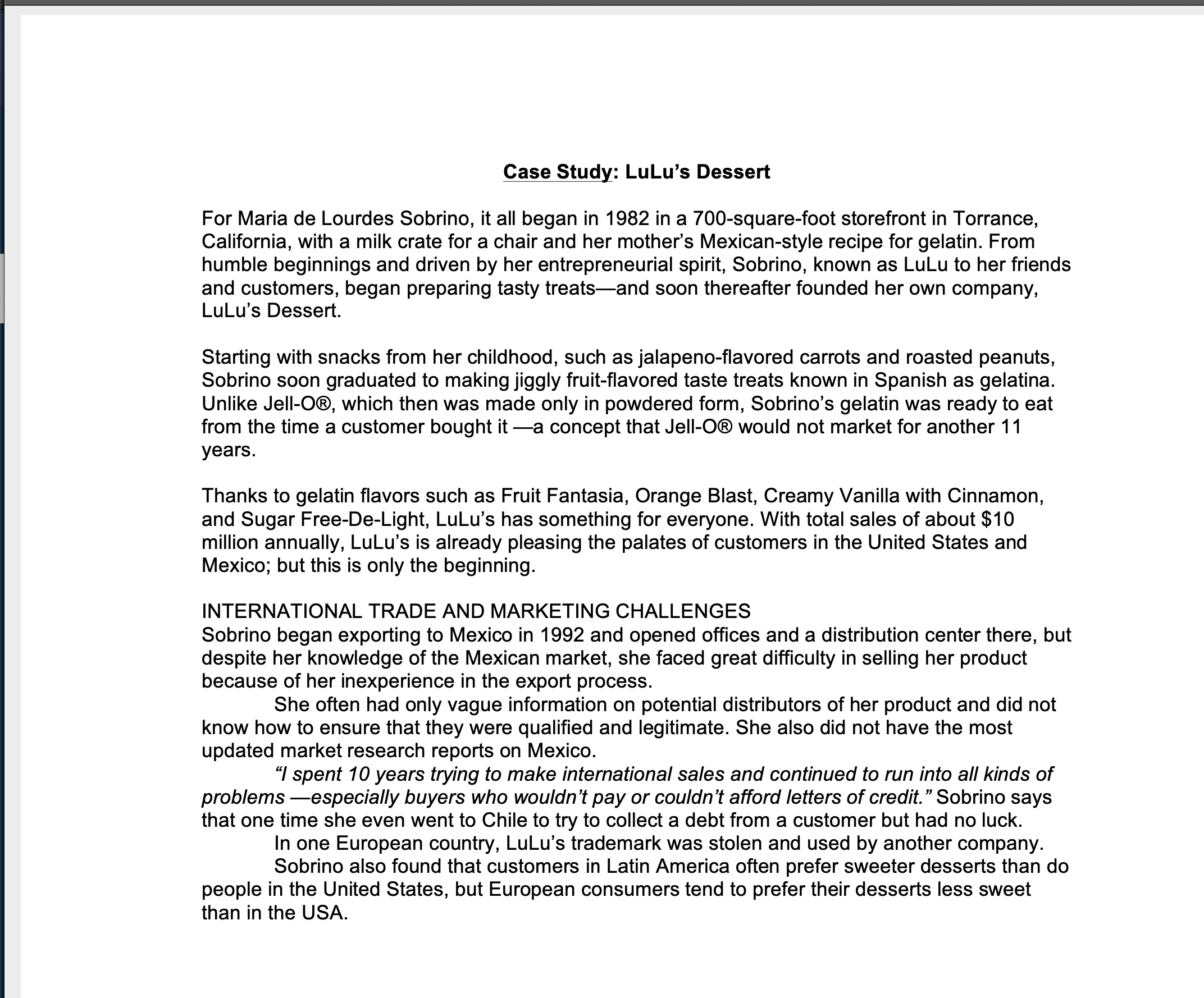Case Study: LuLu's Dessert For Maria de Lourdes Sobrino, it all began in 1982 in a 700-square-foot storefront in Torrance, California, with a milk crate for a chair and her mother's Mexican-style recipe for gelatin. From humble beginnings and driven by her entrepreneurial spirit, Sobrino, known as LuLu to her friends and customers, began preparing tasty treatsand soon thereafter founded her own company, LuLu's Dessert. Starting with snacks from her childhood, such as jalapeno-flavored carrots and roasted peanuts, Sobrino soon graduated to making jiggly fruit-flavored taste treats known in Spanish as gelatina. Unlike JeII-O, which then was made only in powdered form, Sobrino's gelatin was ready to eat from the time a customer bought it a concept that Jell-O would not market for another 11 years. Thanks to gelatin flavors such as Fruit Fantasia, Orange Blast, Creamy Vanilla with Cinnamon, and Sugar Free-De-Light, LuLu's has something for everyone. With total sales of about $10 million annually, LuLu's is already pleasing the palates of customers in the United States and Mexico; but this is only the beginning. INTERNATIONAL TRADE AND MARKETING CHALLENGES Sobrino began exporting to Mexico in 1992 and opened offices and a distribution center there, but despite her knowledge of the Mexican market, she faced great difficulty in selling her product because of her inexperience in the export process. She often had only vague information on potential distributors of her product and did not know how to ensure that they were qualified and legitimate. She also did not have the most updated market research reports on Mexico. \"I spent 10 years trying to make international sales and continued to run into all kinds of problems especially buyers who wouldn't pay or couldn't afford letters of credit.\" Sobrino says that one time she even went to Chile to try to collect a debt from a customer but had no luck. In one European country, LuLu's trademark was stolen and used by another company. Sobrino also found that customers in Latin America often prefer sweeter desserts than do people in the United States, but European consumers tend to prefer their desserts less sweet than in the USA







